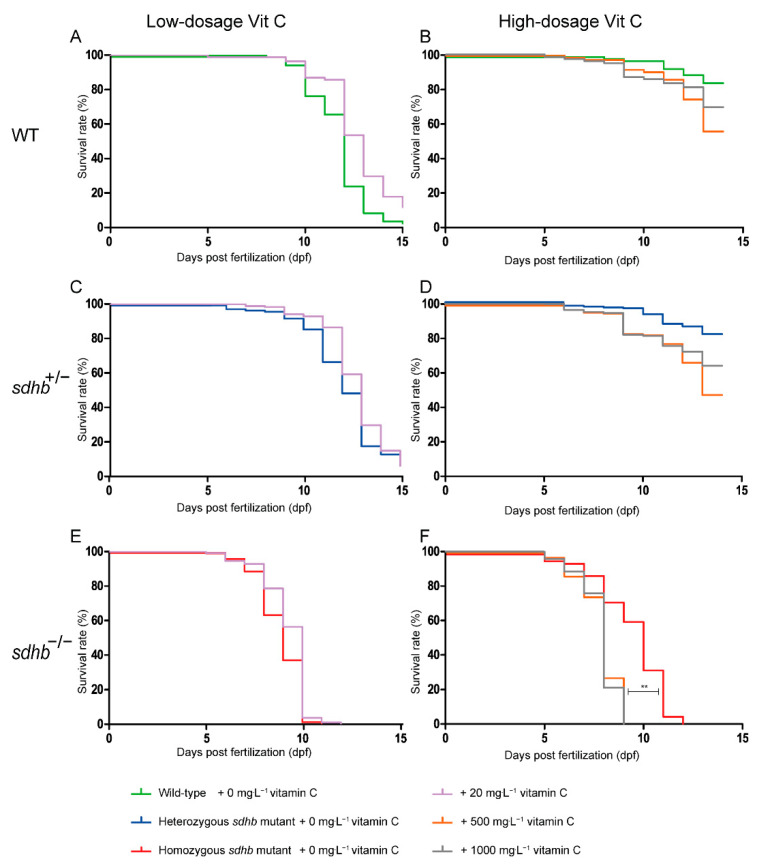Figure 3
Survival in WT siblings (A,B), heterozygous sdhb mutants (C,D), and homozygous sdhb mutants (E,F) presented for control (0 mg?L?1 green, blue, and red lines, respectively); low dosage ((A,C,E) 20 mg?L?1, purple line) and high dosage ((B,D,F) 500 mg?L?1, orange line; 1000 mg?L?1, grey line) Vitamin-C-treated larvae. (A,C,E) Survival rate (%) was not significantly prolonged after the low-dosage treatment of Vitamin C sdhb larvae compared to control (E3 medium supplemented; 0 mg?L?1) larvae (control: n = 95 homozygous sdhb larvae, n = 126 heterozygous sdhb larvae, and n = 85 WT larvae; 20 mg?L?1 Vitamin C: n = 112 homozygous sdhb larvae, n = 190 heterozygous sdhb larvae, and n = 91 WT larvae from two replicates). (B,D,F) Survival rate (%) was significantly reduced in homozygous sdhb mutants after treatment with high dosages of Vitamin C (500 and 1000 mg?L?1) compared to control (E3 medium supplemented) larvae (control: n = 72 homozygous sdhb larvae, n = 198 heterozygous sdhb larvae, and n = 87 WT larvae; 500 mg?L?1 Vitamin C: n = 84 homozygous sdhb larvae, n = 195 heterozygous sdhb larvae, and n = 70 WT larvae; 1000 mg?L?1 Vitamin C: n = 90 homozygous sdhb larvae, n = 172 heterozygous sdhb larvae, and n = 86 WT larvae from two replicates). No significant differences were observed between sdhb heterozygous and WT siblings at either low or high dosage Vitamin C treatment. Log-rank (Mantel?Cox) test, ** p < 0.01.

